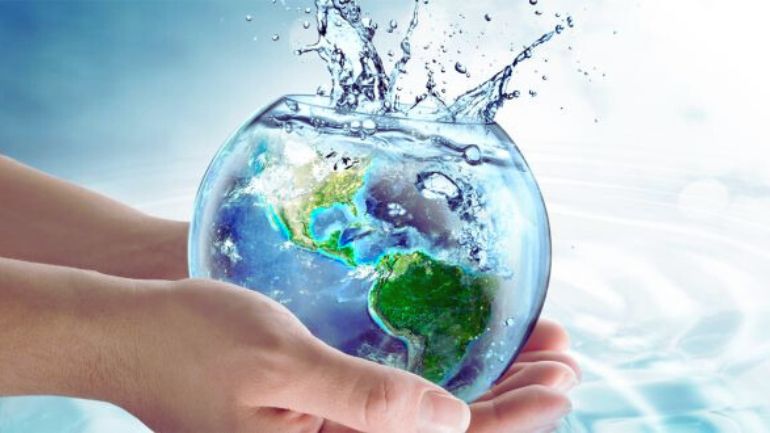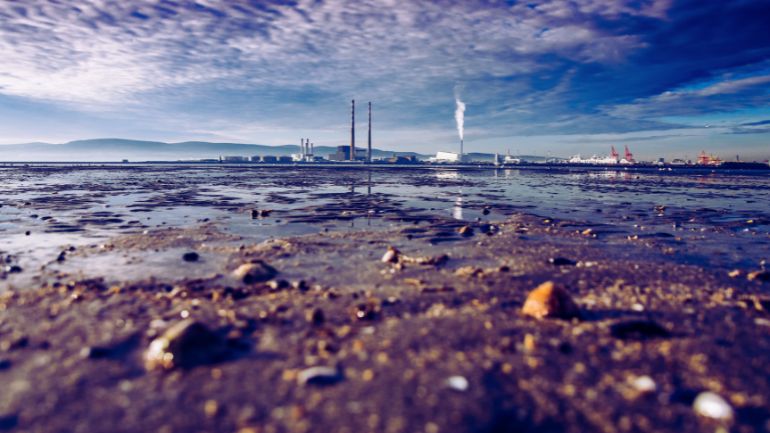The UAE challenges are numerous and varied; the United Arab Emirates is a country cited in the Middle East, known for its vast desert landscapes, modern cities, and booming economy UAE is rapidly developing. However, this prosperity has come at a cost to the environment. The UAE faces various environmental challenges, including water scarcity, air pollution, and the waste management industry. These challenges are compounded by the country’s arid climate and rapid population growth. Despite these difficulties, the UAE’s experts have taken steps to address these issues through innovation and sustainable development initiatives. This article will examine the environmental challenges facing the United Arab Emirates and the measures taken to mitigate their impact.
Environmental and Climate UAE challenges
The United Arab Emirates, known for its hot weather and desert landscapes, faces significant environmental challenges affecting its progress related to water scarcity, high temperatures, and carbon emissions. UAE challenges; 7 most important major environmental ones.
Water scarcity UAE challenges

The uae’s arid climate with low rainfall, no rivers, and limited groundwater aquifers poses challenges to the governance of water. With a growing population and economy, the water demand is outpacing supply. The government has relied on energy-intensive desalination plants that produce high carbon emissions. More efficient water usage and new technologies like solar desalination for sea water can help address water security in the UAE United Arab Emirates.
High temperatures and climate change
The United Arab Emirates uae government already experiences extremely hot weather for much of the year from Apr to Sep, The weather will be moderate at Nov, Sep, Jan, Feb, and mar. With climate change, temperatures are projected to increase up to 3 °C by 2100. Higher temperatures pose risks to human health as adapting, increase the demand for cooling and electricity needs, and may make some space unsuitable for agriculture. The United Arab Emirates can curb emissions by transform to renewable energy and promoting sustainable transportation and green buildings.
Carbon Emissions UAE challenges
Although a small country, the United Arab Emirates has a very high carbon footprint per capita due to its oil wealth and lavish lifestyle. Most of the emissions come from the energy sector, including oil and gas production and electricity generation. To meet its Paris Climate Agreement pledge, the UAE will need to adopt meaningful policy and green technologies to decarbonize its energy system and slash emissions.
You can see: Dubai history and culture
Biodiversity loss UAE challenges

One of the UAE challenges is the loss of biodiversity, as the development in the UAE United Arab Emirates has resulted in the destruction of natural habitats and the loss of biodiversity. Coastal developments have damaged mangroves and coral reefs. Terrestrial ecosystems like wetlands have also declined. Conserving remaining ecosystems, restoring damaged habitats, and responsibly planning new developments can help protect the UAE’s biodiversity.
Overfishing in the UAE challenges
Overfishing is one of the most important issues facing the United Arab Emirates. Especially unsustainable fishing practices, can severely deplete fish populations and damage marine ecosystems. The UAE’s coastal waters and fish populations have likely been impacted by overfishing, given the country’s historical reliance on fisheries, food, and economic activity. Managing fishing levels and restricting certain practices can help address overfishing.
Waste Generation UAE challenges
The United Arab Emirates (UAE) faces a significant challenge in waste management due to abuse and high per capita waste generation rates. Unfortunately, there is surprising news, most of this waste is in landfills. As a result, the governments have made efforts in practical policies and developed coordinated strategies and reports to reduce this issue while also ensuring the protection of biodiversity and ecosystems from any significant adverse environmental impact.
Land degradation and desertification UAE challenges
Deserts cover much of the UAE, and desert sands are expanding due to climate change and poor land management. As deserts spread into inhabited and agricultural areas, they degrade the land and threaten communities and food production.
About 73% of the UAE’s land area faces moderate to severe desertification issues. The Al Ain region in Abu Dhabi and the northern emirates are the worst affected.
To combat this issues, the UAE government has finding various opportunities such as restricting off-road driving, controlling overgrazing, promoting reforestation, using treated wastewater for irrigation, etc.
Also, new technologies, like drip irrigation, mulching, and greenhouse farming, are being used to improve food production with limited resources.
Read more about: UAE visa for engineers
UAE market challenges

Here are the major market challenges in the UAE:
- High dependence on oil: The UAE economy is still heavily dependent on oil revenues. Oil accounts for about 30% of the GDP and 70% of the export earnings. This makes the economy vulnerable to fluctuations in oil prices. The UAE is trying to diversify its economy away from oil through sectors like tourism, trade, and real estate.
- Small domestic market: The UAE has a tiny domestic market due to its small population. Most businesses have to target foreign markets and exports to sustain growth. Expanding regionally and internationally are challenges for some local firms.
- Shortage of skilled labor: There is a shortage of skilled and semi-skilled workers in some sectors like engineering, healthcare, etc. This is partly due to the small population and lack of vocational education. Dependence on foreign workers has also led to wage inflation in some sectors.
- Restrictive business regulations: Some aspects of the UAE’s business laws and regulations can take restrictive or bureaucratic barriers. This can discourage foreign investment and make it difficult for new companies and manufacturers to set up or operate smoothly. Recent economic reforms have aimed at easing such regulations.
- Cost of living and doing business: The UAE United Arab Emirates has a relatively high cost of living and doing business compared to other regional economies. This is due to factors like dependence on imports, high energy costs, taxes, availability of capital, etc. This affects the competitiveness and profit margins of companies.
- Economic dependence on foreign markets challenge: The UAE emirates economy depends heavily on foreign trade, investments, tourism, and reexports. This makes it vulnerable to economic conditions and developments in other countries. There is a need to boost domestic consumption and local production.
- Real estate slump challenge: The real estate sector which was a major contributor to the GDP has seen a slowdown since the 2008 global financial crisis. Significant oversupply and speculation have led to a drop in real estate prices, rents, and demand. This has negatively impacted the overall economy and businesses.
That covers some key challenges of doing business faced by the market and businesses in the United Arab Emirates.
Also for you: UAE visa for doctors
UAE economic challenges
In recent days, the United Arab Emirates has faced several economic challenges, including UAE challenges in doing business.
Oil exports have traditionally been a critical driver of economic growth in the UAE.
COVID-19 pandemic, which had a significant impact on the country’s economy. The pandemic has disrupted global supply chains, reduced demand for goods and services, and forced the closure of many businesses, leading to significant job losses.
Develop new industries, such as tourism, technology, and renewable energy. However, this transition has not been without its challenges.
It requires significant investment in infrastructure and human capital by an experienced workforce and the development of new policies, solutions, and regulations to support these emerging industries.
What is UAE weakness?
Dependence on oil, High cost of living, Human rights concerns, Climate change and Security concerns.
How does the UAE plan to encourage businesses to reduce their carbon footprint?
The UAE government is exploring ways to encourage businesses to reduce their carbon footprint. One of the most effective ways of doing this is by introducing a carbon pricing mechanism, Green procurement, Energy efficiency standards, Voluntary programs, Green financing, and Public-private partnerships.
What is the UAE doing to address climate change?
Renewable energy, Energy efficiency, Carbon capture and storage, Sustainable transport, Carbon pricing, and Climate adaptation.
UAE Challenges such as water scarcity, high temperatures, climate change, carbon emissions, and biodiversity loss pose severe environmental challenges for the future sustainability of the United Arab Emirates. With a transition to more sustainable policies and renewable energy technologies, the UAE can ensure its economic issues and population remain resilient in the coming decades.













